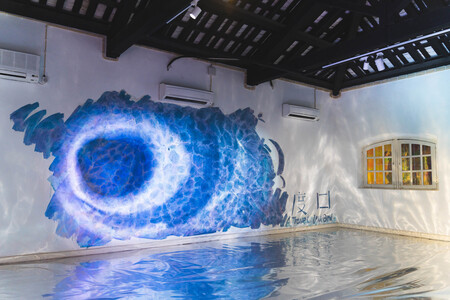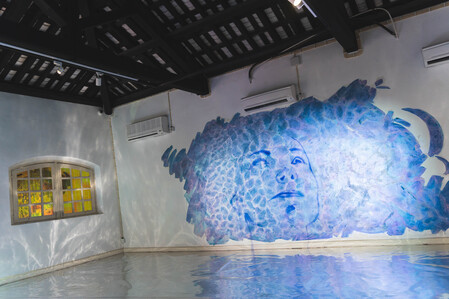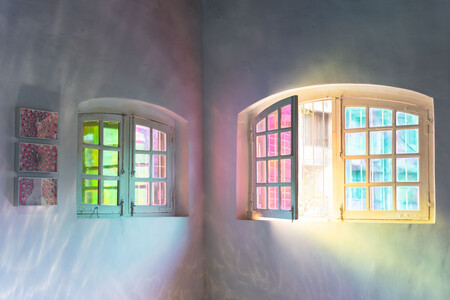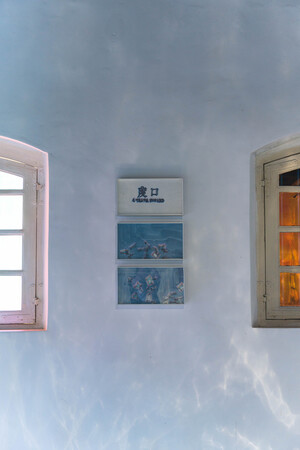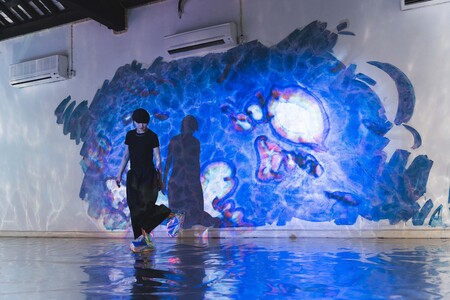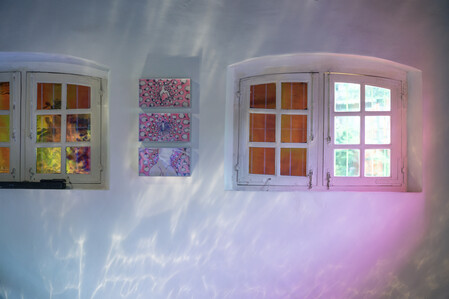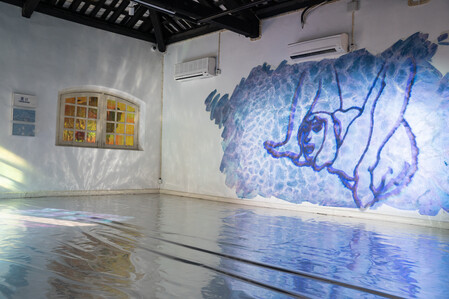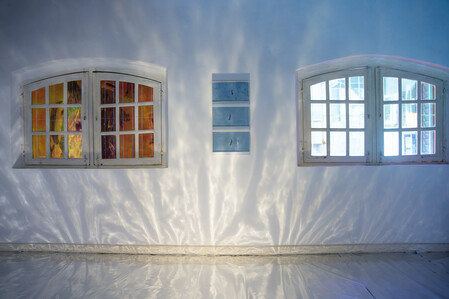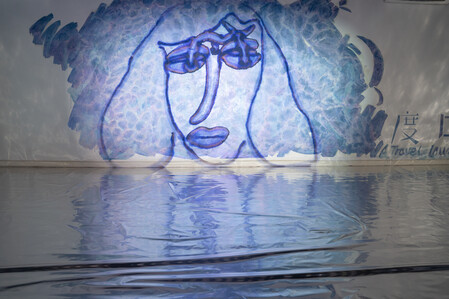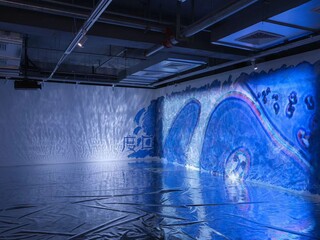Group Exhibition OX Warehouse, Macao, Former Municipal Cattle Stable,Intersection of Avenida do Coronel Mesquita and Avenida Almirante Lacerda
The theme of this exhibition, “Egress of the Spirit”, aims to emphasize the concept of creating an exit for the “Spirit” to travel. In the linguistic context of ancient China, the term “egress of the spirit” originated from the Taoist tradition, which involves practices and training in Taoism. According to Taoist beliefs in deities, cultivators, under specific conditions, can cultivate their inner spirit known as “yuanshen”, enabling it to be liberated from the physical body.
This liberation allows the “yuanshen” to traverse the realm of mortals, undertaking special religious tasks or even ascending directly into the realm of immortals.
In historical records, the term “egress of the spirit” with the aforementioned meaning first emerged after the establishment of the Lei Fa (Thunder Spell) school during the Song Dynasty. Lei Fa deeply integrated the practice of “neidan” (internal alchemy), harnessing the power of “internal life movement”. Through the “egress of the spirit”, the boundaries of time and space between humans and deities are transcended, facilitating the transformation from the ordinary “mundane body” to the “sacred body”.
The practice of “egress of the spirit” is a practice in which cultivators explore the development within their own bodies, closely linked to the mind-body philosophy in early China. In the ideal model of the body, encompassing “xing, qi, and xin” (form, energy, and mind), various elements such as blood, meridians, acupoints, and organs serve as entry points for the “spirit” and its transformation. These are also places where the body connects internally and externally with nature. Form and spirit, orifices and qi, and the body's surface orifices and intangible emotions are continuously circulating, returning, and blending together, supported by the flow of qi. This collective process gives rise to the harmonization and nurturing of the qi cosmology, emphasizing “the unity of all things and the integration of form and spirit.”
The purpose of “egress of the spirit” is to maximize the potential for “travel”, where the “travel of the spirit” represents the transcendence of one's spiritual self. The premise of this transcendence lies in “visualization”, which not only involves entering a state of “quiet meditation, forgetting both the self and the world” through “spiritual imagination”, but also focuses on “exploring and visualizing the internal landscape”. This practice emerged as a body technique during the medieval period. It breaks free from the constraints of everyday life on bodily actions. As individuals traverse mountains, cross waters, explore caves, and embark on exotic journeys, their bodies engage in a process of “viewing in motion”. While experiencing external landscapes, they simultaneously reflect upon the visualization of their inner landscape. By “traveling the world through the mind”, the subject and object interact and intertwine, achieving a state of “profound coincidence”.
The fleeting moments of the “egress of the spirit” give rise to various grand or subtle imaginaries, which are scenes blending reality and illusion. These provide creative inspiration and direction for the seven artists participating in this exhibition. A total of 11 artworks are displayed, including paintings, installations, videos, photography, and other media.
Jonathan Crary argues that Friedrich Nietzsche's perspective on “attention” is: “Attention possesses an intense focus, a potential for forgetting some eternal moments in the flow of human time.” Does this kind of “forgetting” resemble the state of “forgetting both the self and the world” after the “egress of the spirit”? Whether addressing the scarcity of the “presence of mind” in contemporary society, as raised by Max Horkheimer in the early 20th century, or confronting the precise control brought about by the profound datafication of modern media, can the “egress of the spirit” reestablish the freedom of “attention” to some extent? It distinguishes itself from distraction, inattention, detachment, or trance. It represents another form of concentration, stimulated by the spiritual energy generated through “contemplation”. In this journey of “spirit wandering”, nature is not viewed as a purely aesthetic object detached from any interests or harms. Instead, it guides individuals to immerse themselves in the circulation of energy, opening the path for the formation of an inward-oriented character. This allows individuals to discover that the “self” is actually a part of nature, enabling them to experience the deepest “emotions” when the innermost “true self” is fulfilled within nature.
More Pictures:


